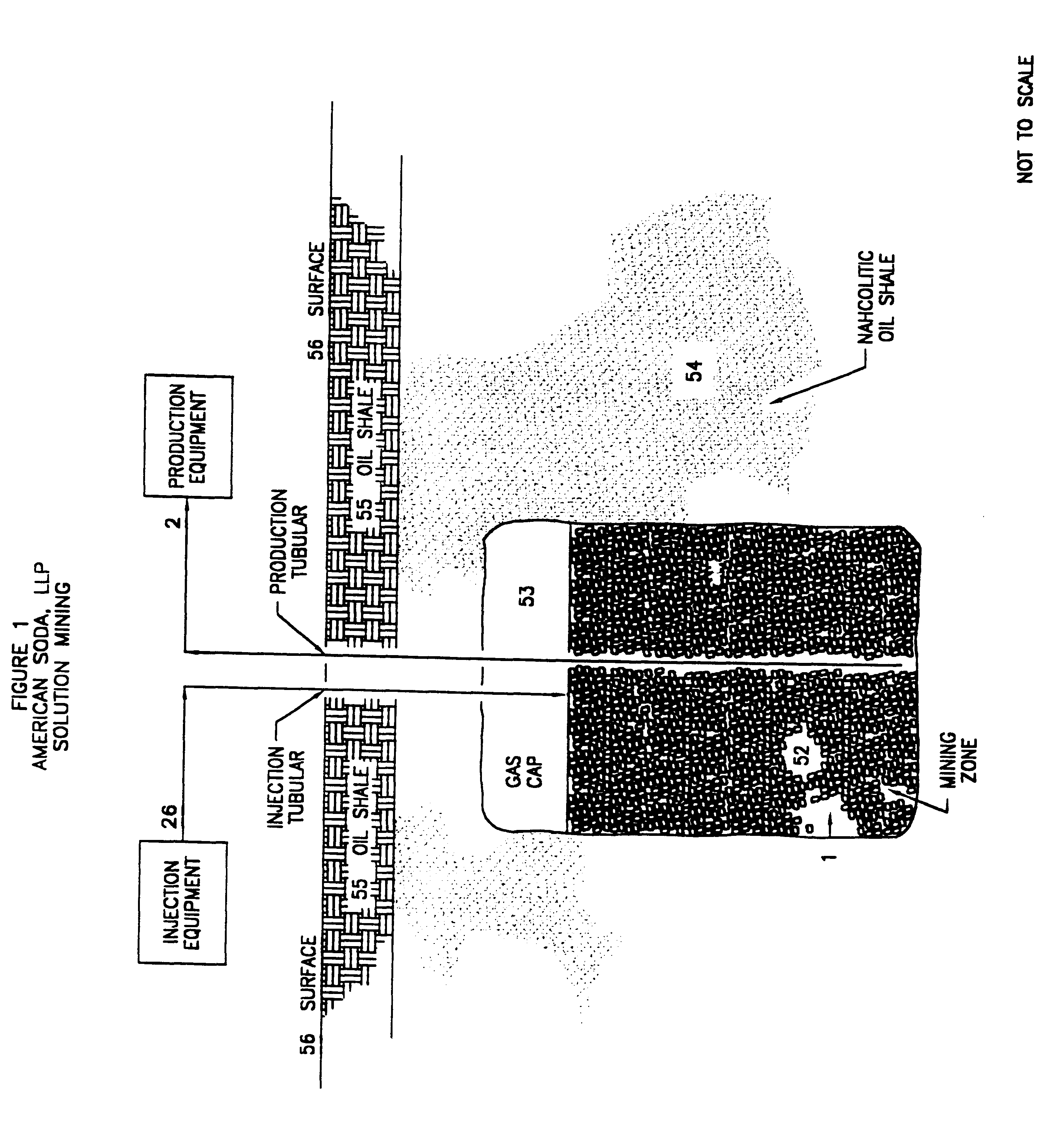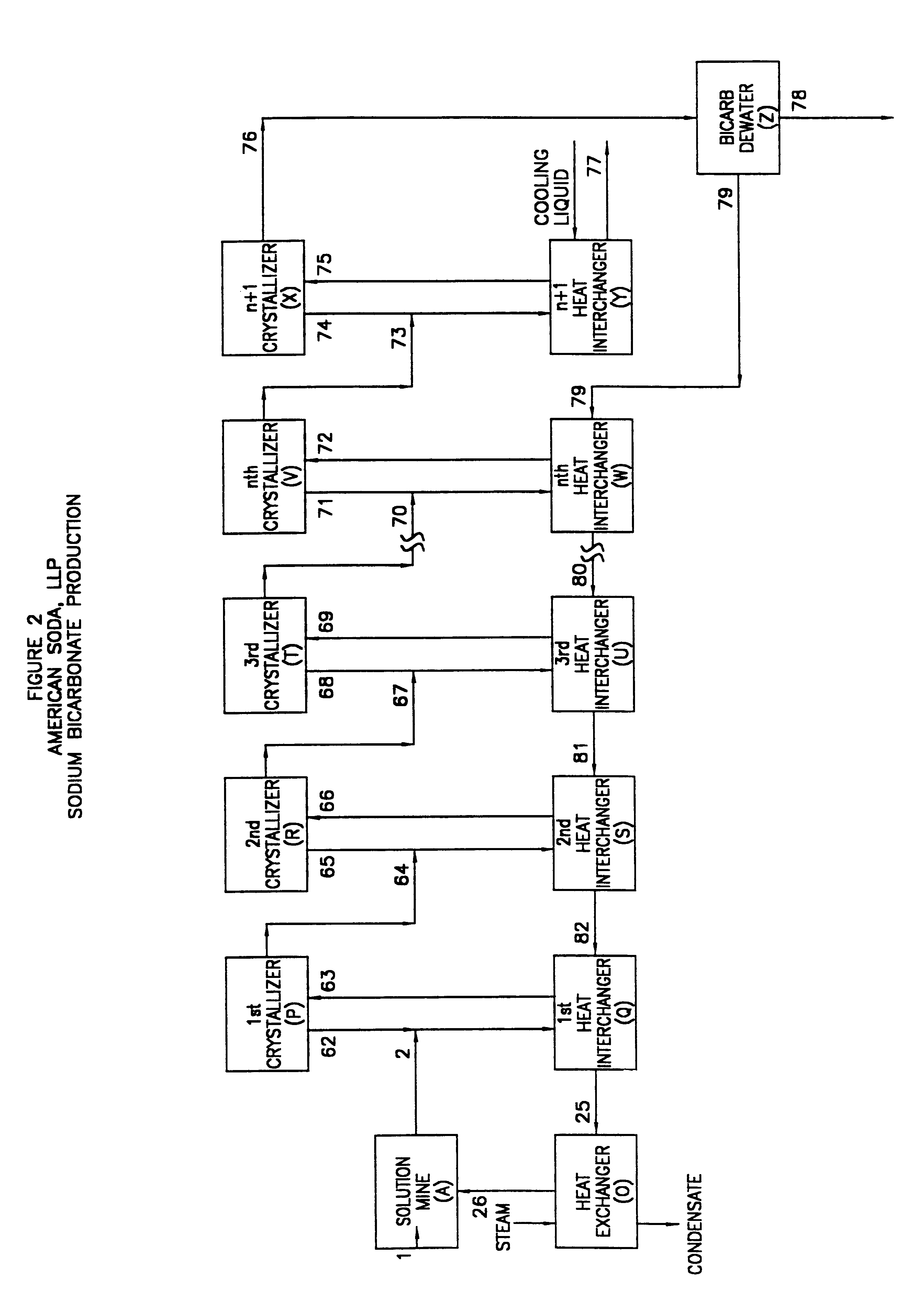Sodium bicarbonate production from nahcolite
- Summary
- Abstract
- Description
- Claims
- Application Information
AI Technical Summary
Benefits of technology
Problems solved by technology
Method used
Image
Examples
example 1
This example illustrates the high temperature solution mining of nahcolite.
The techniques described herein are utilized effectively in the solution mining of nahcolite from the nahcolitic oil shale deposits in the Piceance Creek Basin of western Colorado. These deposits, for the most part, consist of lenses and nodules of nahcolite contained within an oil shale host rock. The nahcolite content of this portion of the deposit is 18% to 40%. There are also several, nominally-horizontal beds of varying thickness of nahcolite within the deposit.
A well is drilled into a nahcolitic oil shale, as shown in FIG. 3E, with the mining zone extending from 1647 feet below the ground surface (where injection solution is inserted into the formation) to 2202 feet (where the production solution is recovered), i.e., a vertical separation of 555 feet. The average nahcolite concentration over the mining zone is 22%, of which, 91.2% is contained in nodules within the oil shale and 8.8% is contained in bed...
example 2
This example illustrates the recovery process shown in FIG. 2.
The process of the present invention, as described in FIG. 2, may be conducted under the following process parameters:
This example assumes a feed rate of approximately 767 tons per hour with a sodium bicarbonate content of 25% and utilizes five stages of equipment of a size believed to be commercially available.
The material balance of the system is:
If, however, the feed rate were increased to 2000 tph or the sodium bicarbonate content were increased to 50%, then as many as 10-12 stages would be required to create the same supersaturation potentials in each stage, because of equipment size limitations.
This example also assumed an equal temperature decrease in each stage. This assumption would result in unequal crystal production in each stage because the solubility of sodium bicarbonate is not a straught line when plotted against temperature. The system may be designed for equal crystal production in each stage. In that ca...
example 3
As another example using multiple stages of crystallization as illustrated in FIG. 2, and by using a saturated feed at a temperature of 350.degree. F., approximately sixty percent more sodium can be produced using approximately fifty-seven percent of the feed volume utilized in Example 2. With feed temperatures greater than 350.degree. F., even greater production per unit volume of feed can be attained.
PUM
| Property | Measurement | Unit |
|---|---|---|
| Temperature | aaaaa | aaaaa |
| Length | aaaaa | aaaaa |
| Fraction | aaaaa | aaaaa |
Abstract
Description
Claims
Application Information
 Login to View More
Login to View More - R&D
- Intellectual Property
- Life Sciences
- Materials
- Tech Scout
- Unparalleled Data Quality
- Higher Quality Content
- 60% Fewer Hallucinations
Browse by: Latest US Patents, China's latest patents, Technical Efficacy Thesaurus, Application Domain, Technology Topic, Popular Technical Reports.
© 2025 PatSnap. All rights reserved.Legal|Privacy policy|Modern Slavery Act Transparency Statement|Sitemap|About US| Contact US: help@patsnap.com



